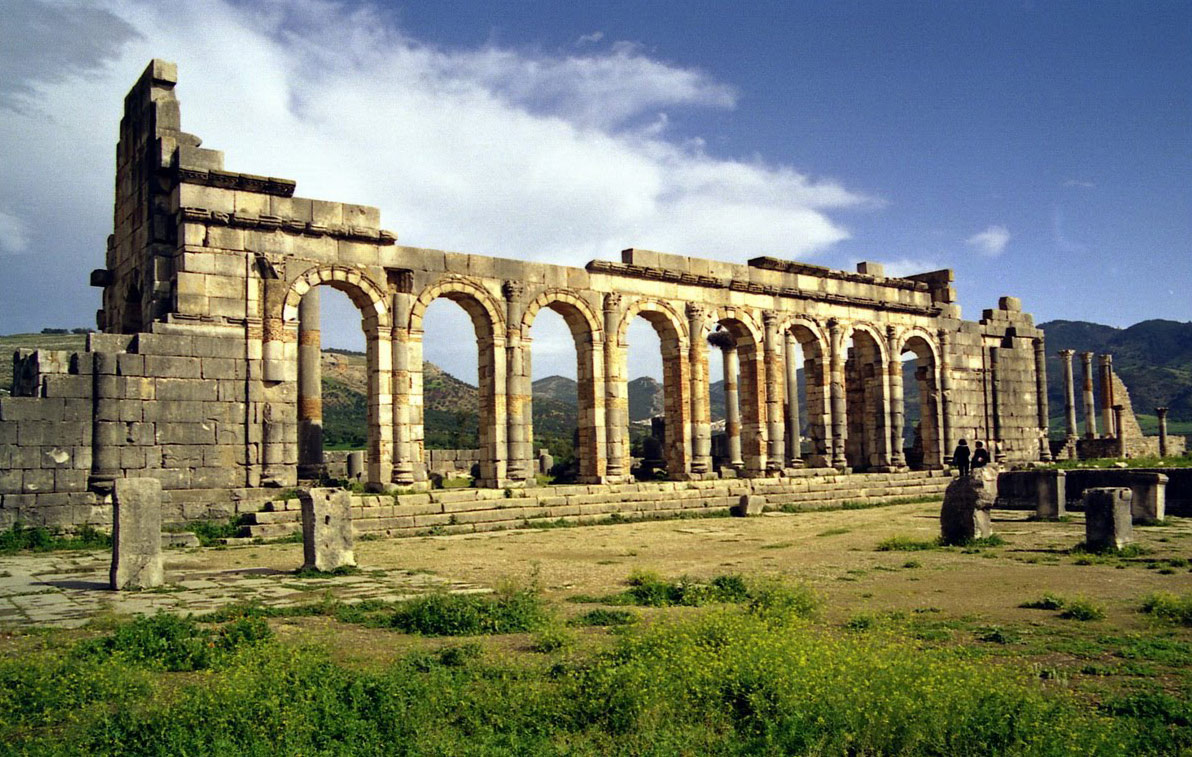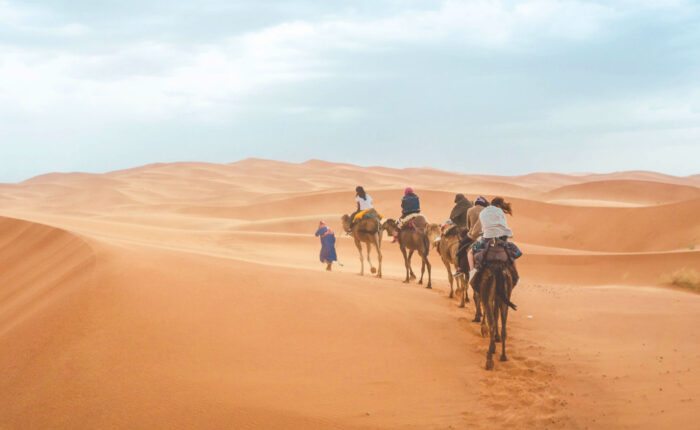Morocco’s Imperial Cities are the old capitals of historic empires and dynasties that ruled over the kingdom for long centuries, and made it an enchanting destination to visit. Above the almighty Atlas Mountains, lies the smallest and most relaxed of the imperial towns, Meknes.
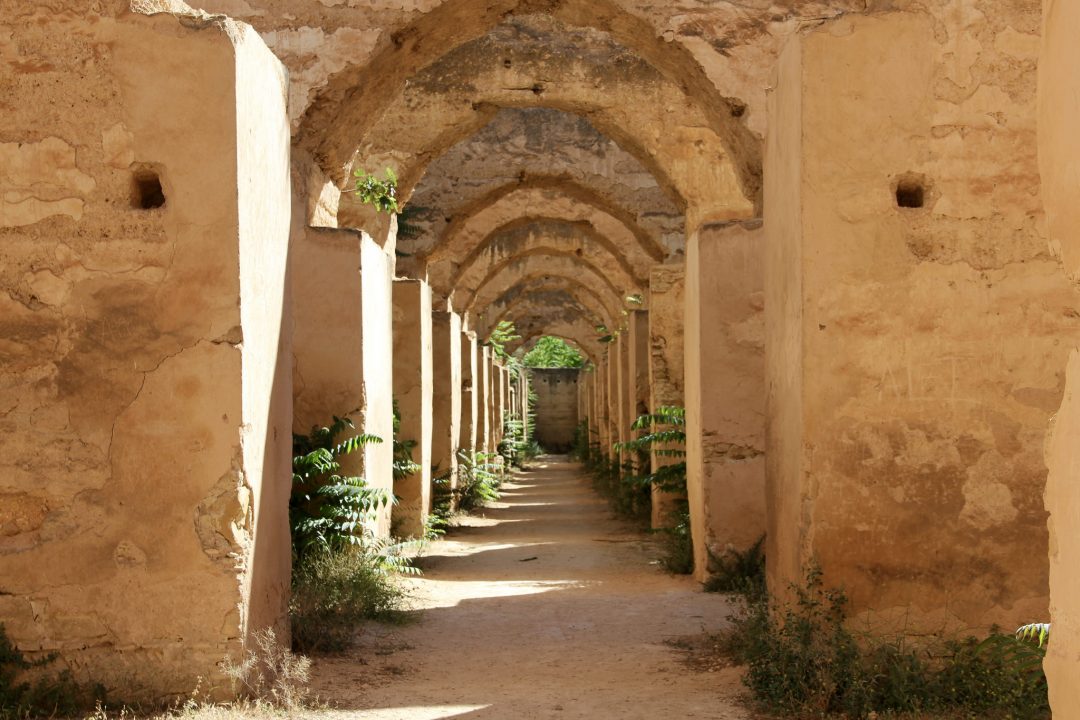
Meknes is famously known for authentic doors, Moorish architecture and medieval walls; it was founded in the early 11th century as a military settlement, and then became a capital under the rule of Sultan Moulay Ismaïl in the 17th century. The sultan turned Meknes into an impressive city with the creation of vast gardens, numerous edifices, mosques and monuments as well as 40 kilometers of thick walls and monumental gates lining the city. The 18th century was unfortunately the end of Meknes’s flourishing reign after the death of Sultan Ismaïl and a disastrous earthquake in 1755 that destroyed parts of the city. In 1996, the city of Meknes made the list of UNESCO World Heritage Sites due to its exceptional design including “elements of Islamic and European design and planning in a harmonious fashion.” The designation also fueled many serious renovation projects to help preserve these incredible monuments for the future. Many remnants of Sultan Ismaïl’s rule still stand today.
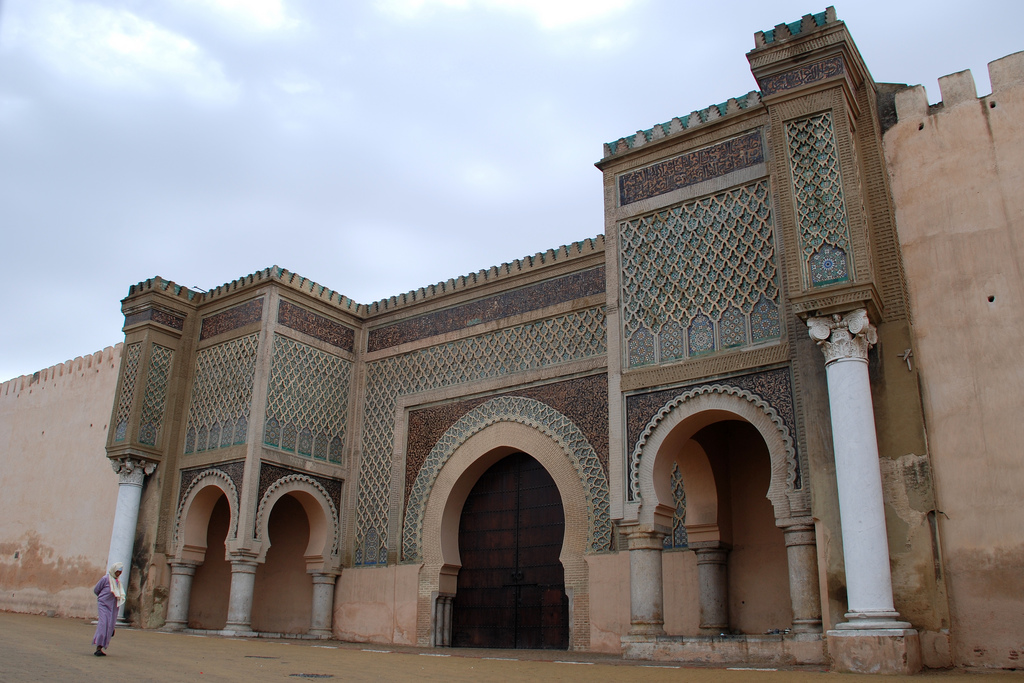
If you’re visiting “Meknes-Tafilalt” region, your journey should begin at the Bab el-Mansour, the biggest gate in all of Meknes. Made from massive marble columns taken from the nearby Roman ruins of Volubilis, the gate is very well preserved with “zellij” mosaics and inscriptions across the top. The Moulay Ismael Mausoleum is the final resting place for the sultan who created this impressive city. Since Ismaïl is recognized as one of the greatest rulers of Morocco, non-Muslim visitors are permitted into the sanctuary, although they are not permitted to approach the tomb. Visitors penetrate the tomb and its courtyards before entering the lavish and highly decorated tomb hall.
Another must-see sight, the Roman ruins of Volubilis, sits just outside of Meknes. The ruins are the most well-preserved archeological site in Morocco. The site contains more than 30 gorgeous mosaics perfectly conserved that tell stories of the ancient Roman Empire. Visiting the ruins of VolubilisVolubilis is an easy day trip from Meknes and can be combined with a trip to Moulay Idriss, one of Morocco’s most important pilgrimage sites.
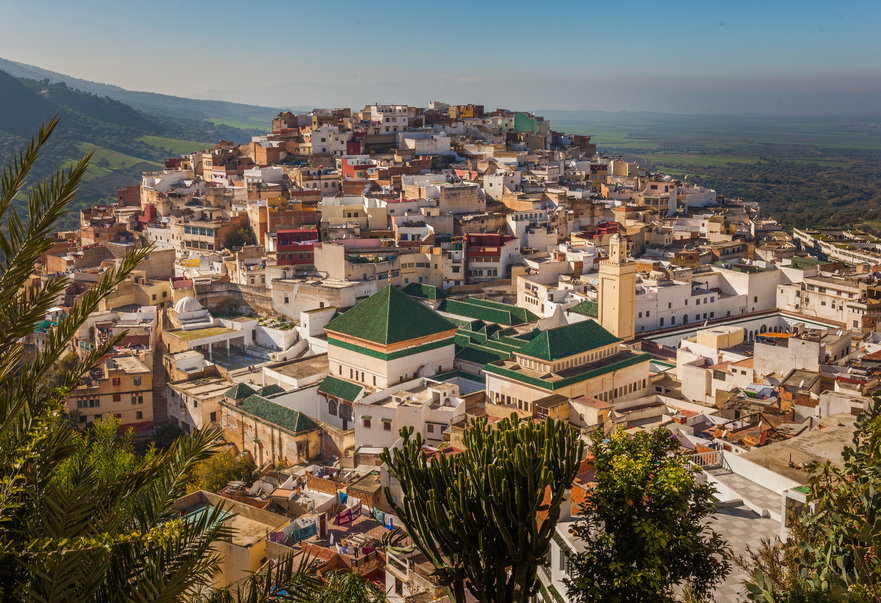
Although Meknes doesn’t have the bustling atmosphere and extensive shops like Marrakesh and Fez, the more relaxed ambiance makes Meknes perfect for browsing ceramics, baskets, embroidery, pottery and brilliantly colored silk threads to take home as souvenirs. The government-run Center Artisanal is a good place to check out the goods and the prices before venturing into the souks, the open-air markets where haggling is commonplace. Surrounded by the fertile plains below the Middle Atlas Mountains, Meknes thrives on an abundance of agricultural products like olives, grains, citrus fruits, and wine. These plains can lead to another astonishingly exquisite Berber city in the region, named Ouazzane where you can spend the day tasting wines and olive oil grown locally in the ancient groves and vineyards. Meknes, Ouazzane, and Volubilis are easily accessible from Casablanca, Rabat or Fez; it is located on the A2 expressway between both cities and is also accessible by train. Once in Meknes, it is easy to get around by bus, taxi or caleche, a horse-drawn cart.

